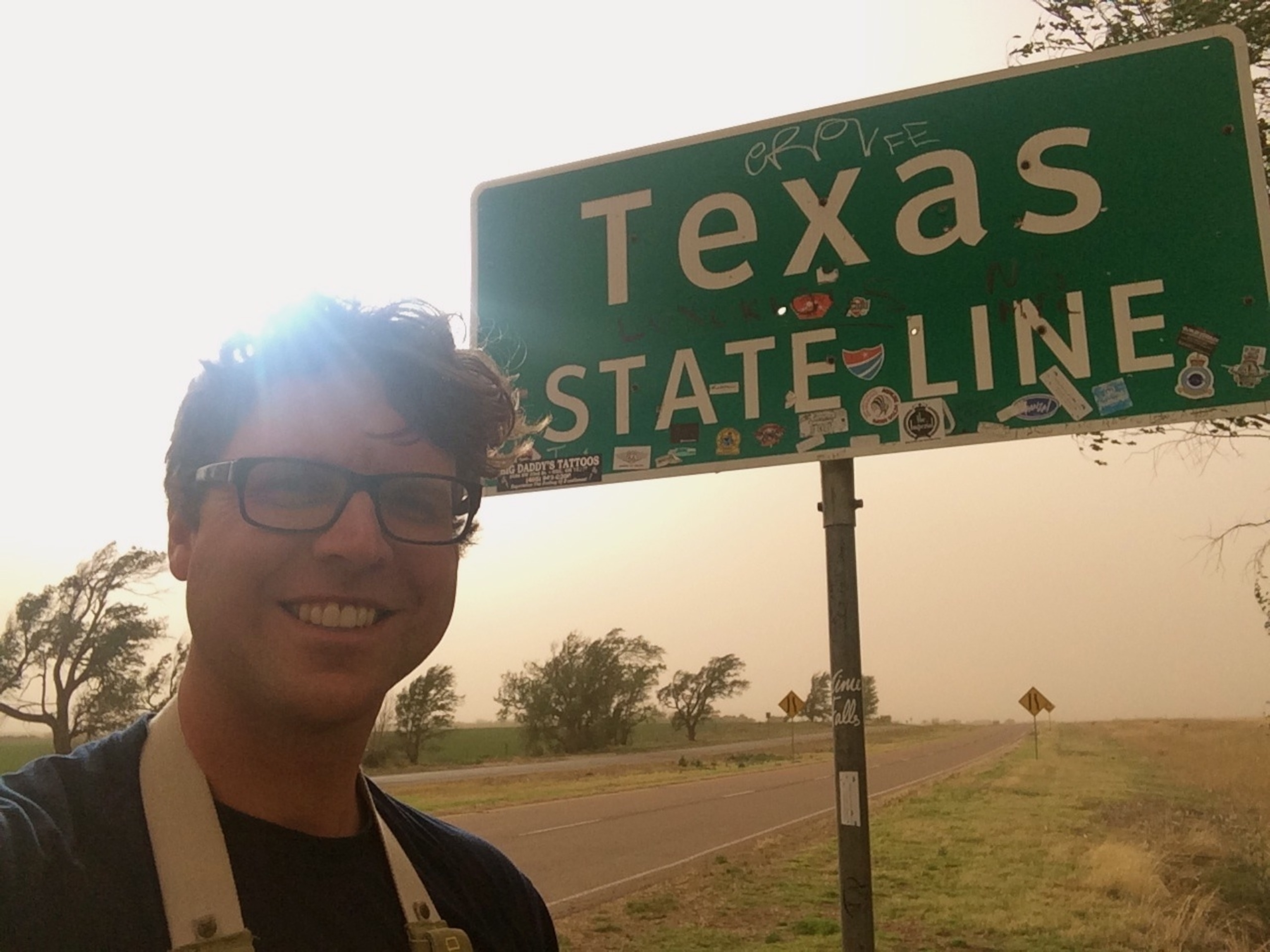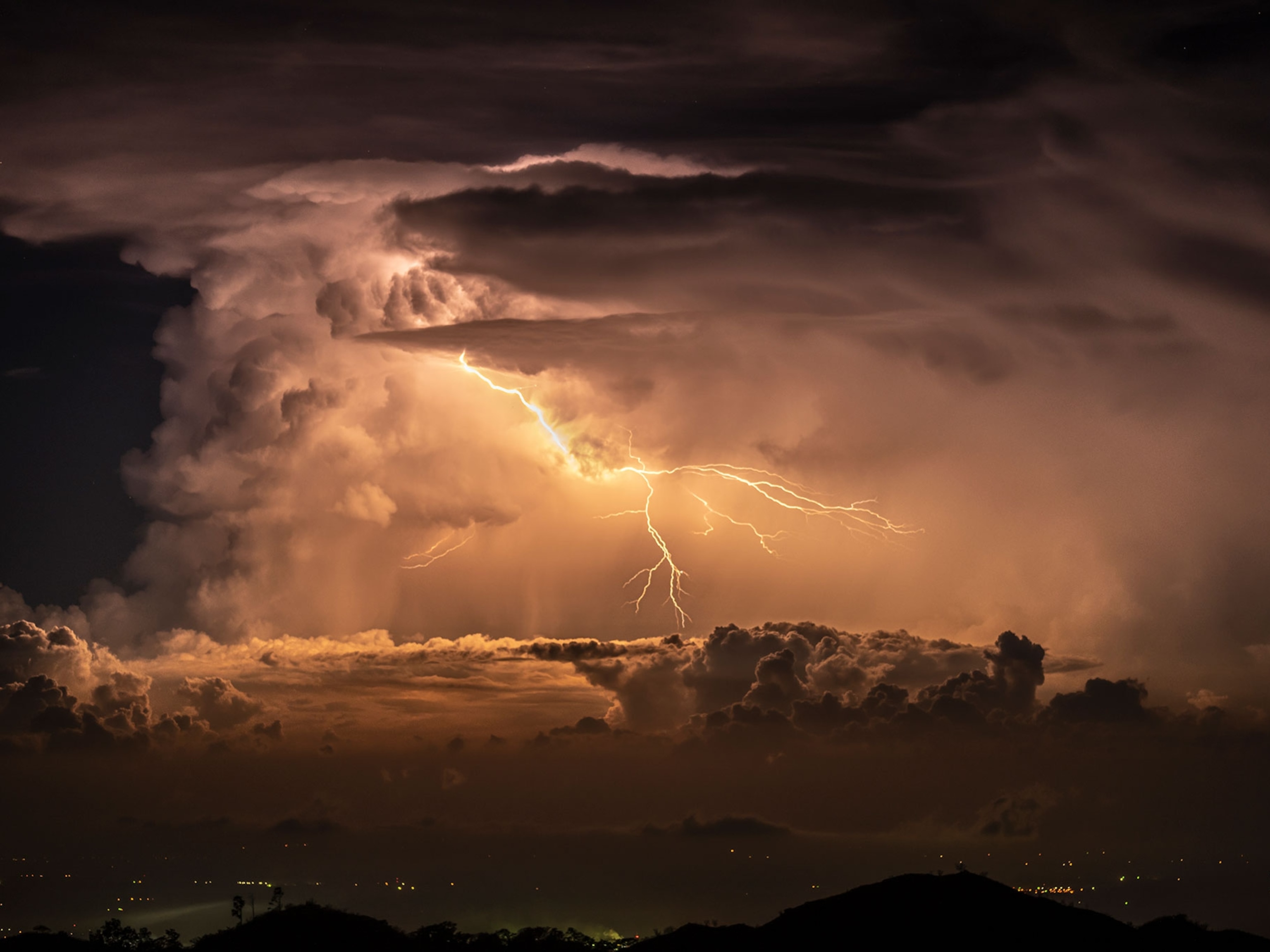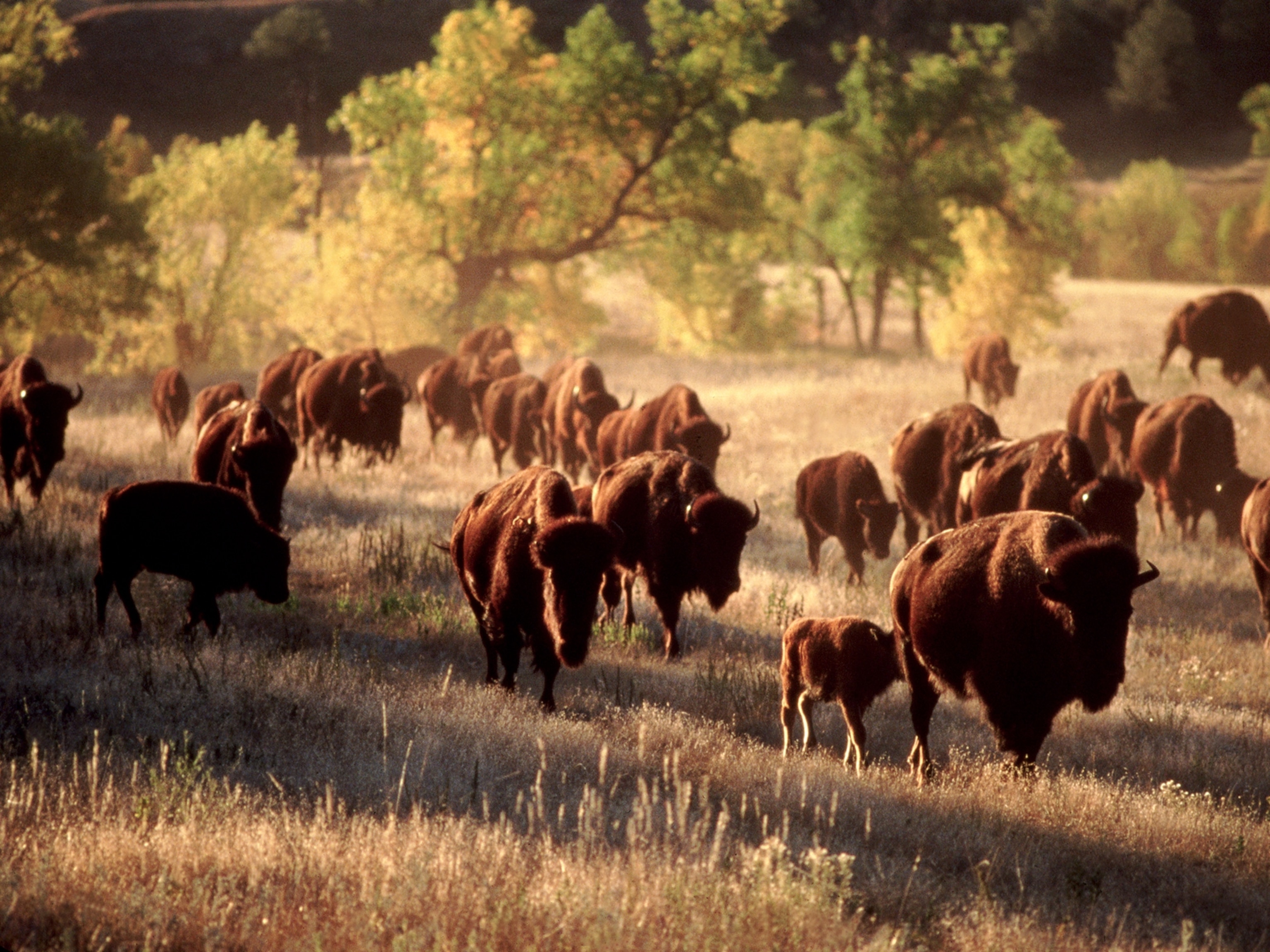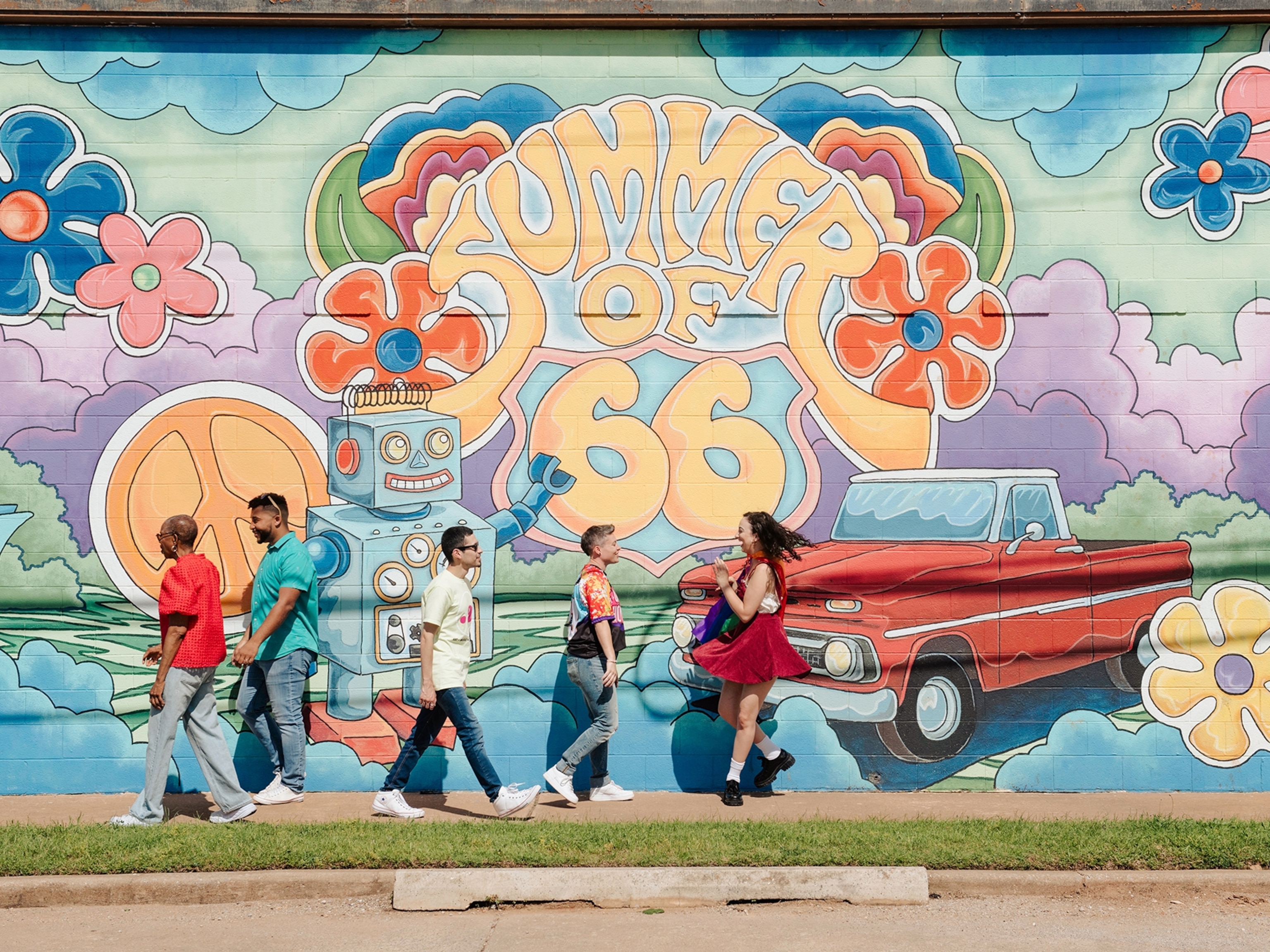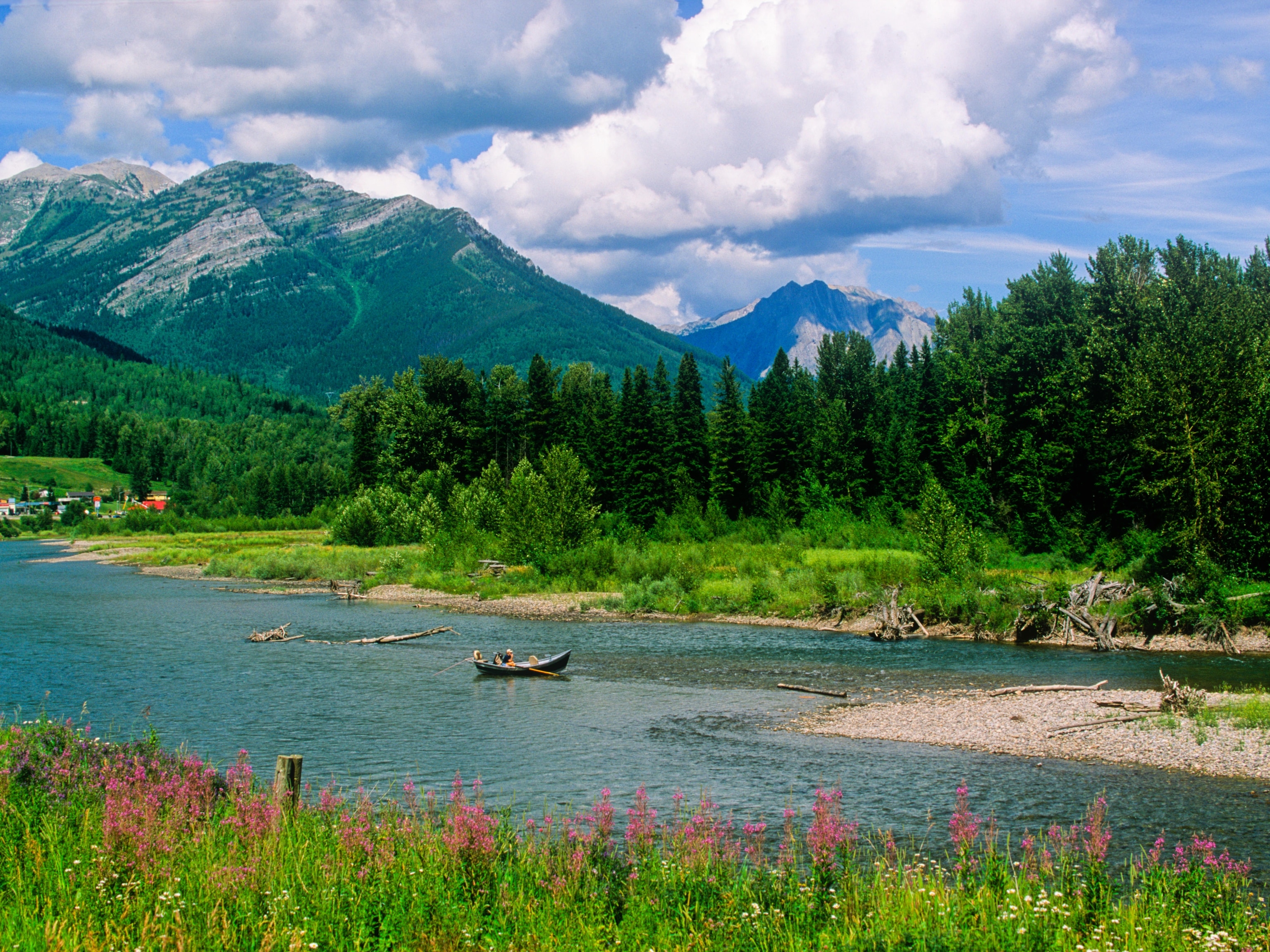
Route 66: Halfway There
The dust cloud followed me all the way from Oklahoma.
Red-brown, like a storm on the ground, the dust rolled over my car in endless tidal waves, pushing me outside the lines on the road.
Ahead of me, a pair of red brake lights glowed in the miasma, like a pair of snake eyes, warning me to back off.
The advisory came that morning by emergency text—Dust Storm. Avoid Travel—but I drove onto Route 66 and pushed right into it with abandon. I know better than to get stuck in the Panhandle. The first time I drove here, they shut the roads for snow and I spent five days sifting through the thrift shops of Amarillo.

That morning, Amarillo lived up to its name. The sky turned yellow and then swallowed up the city in one single sweep. Not a soul walked the streets and after the city disappeared, I drove away like a sole survivor on the last road on Earth, speeding away with high hopes of a clearer horizon.
For an hour I fought the gusting wind until I arrived in Adrian, population 166.

According to (most) authorities, Adrian, Texas is the official midpoint of Route 66. A white line on the road marked the distance to Chicago and Los Angeles—1,139 miles either way. I felt compelled to take a picture but standing next to the sign, I felt no sense of victory.

“I’m only halfway?” I wondered. Already I had been traveling for two full weeks—fourteen days to drive a thousand miles from Chicago to Texas. So much had happened along the way, and yet I had never traveled so slowly in my life.
Grimacing in the 40 mph wind, I snapped a selfie at the midpoint sign, amused by how anti-climactic a place Adrian, Texas really is. There was nothing cheerful or upbeat about the midpoint of Route 66. Instead, the sky raged with the color of dishwater, tumbleweeds pirouetted on the road, and a pair of stray dogs approached me snarling with angry teeth.
I found safety inside the Midpoint Café, where some German tourists were reading the menu like it was a contract they were about to sign.
A thousand miles on Route 66 and I already knew that I had to order the burger. Not that I really wanted a burger, but I knew that anything else would be substandard—you don’t order fish in a landlocked country, and you don’t get Caesar salad in Adrian, Texas. You eat the beef that’s been grazing these same dust-filled plains.
“This is a great burger,” I complimented the chef, a middle-aged lady who seemed exhausted from too many hours in the kitchen.
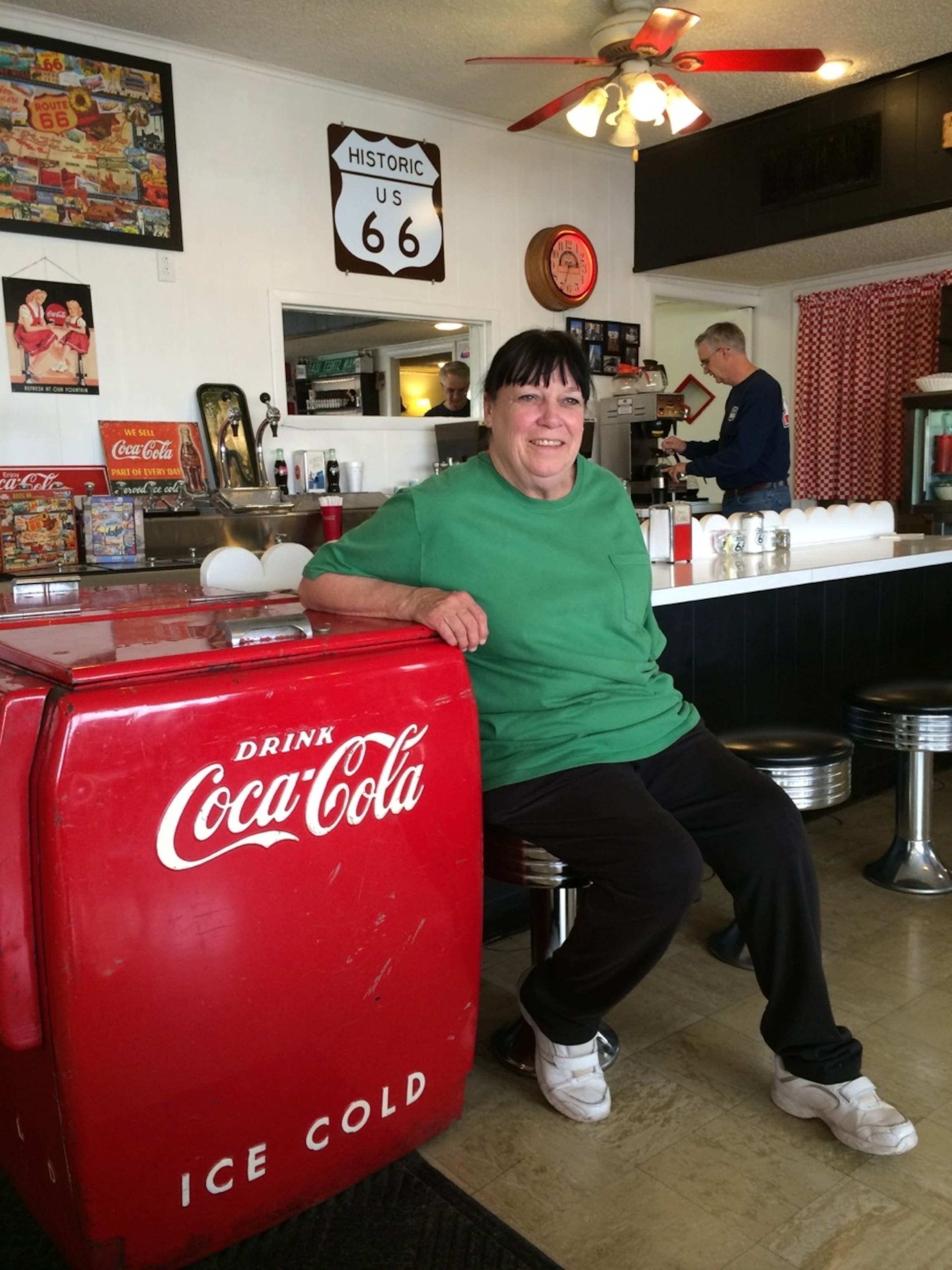
“Thank you,” she said. She was from Vega, the next little town over.
“It’s a three-blink town,” said the owner, jumping in on our conversation.
“Adrian’s a one-blink-you-miss-it kinda place, but Vega’s three-blinks-and-you-miss-it.”
Outside, some bikers had stopped and were smiling at the Midpoint sign, taking pictures before climbing back onto their motorcycles and driving East.
“We call ‘em shooters,” said the owner. “They shoot pictures and then leave.” He disliked shooters. He only liked people who stopped to eat, people who ordered drinks, people who liked his pie, and people who spent a lot of money in his gift shop.
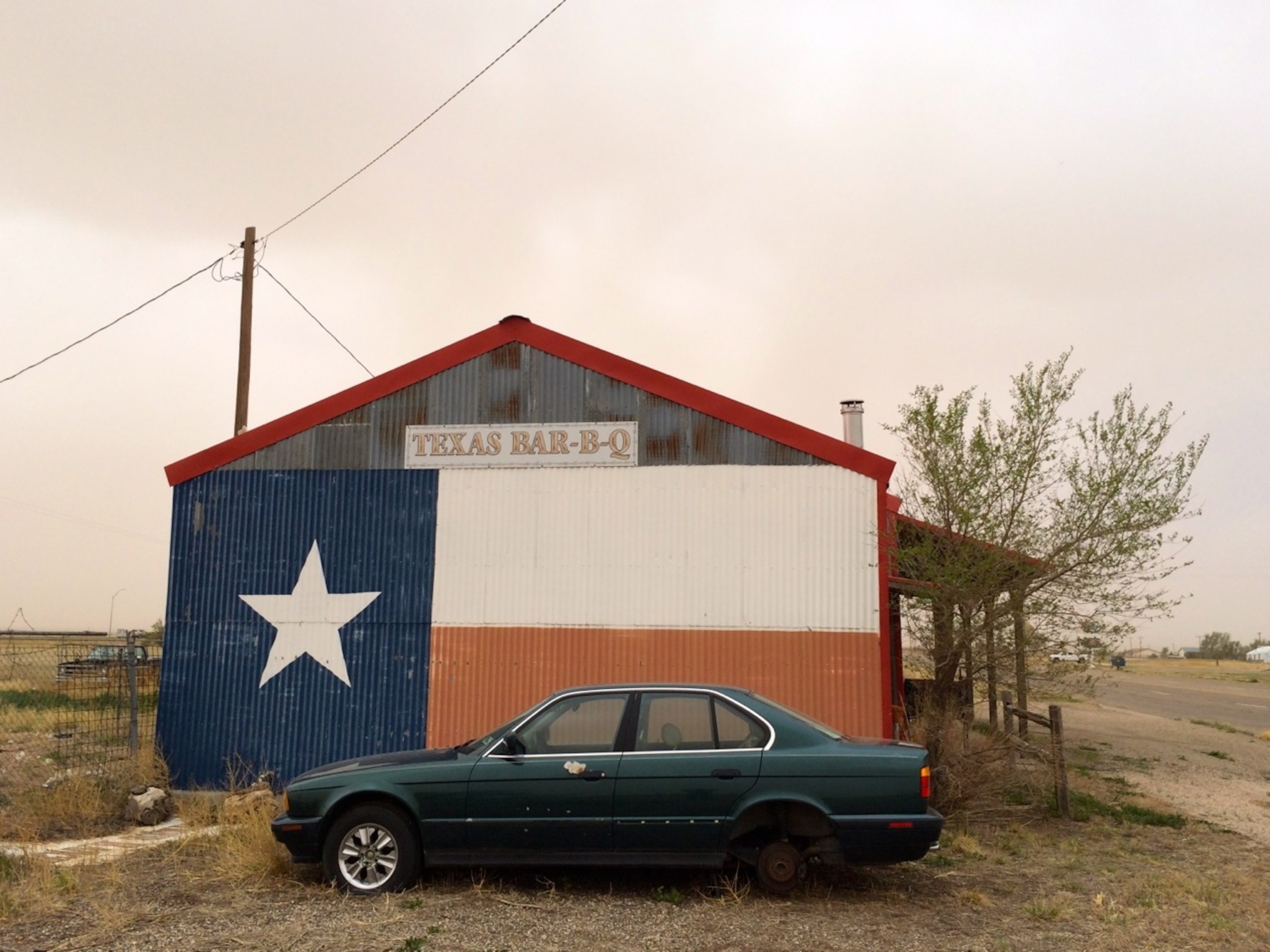
I did my best to oblige him—and the homemade pie was remarkably good—but nothing would change the day’s weather, which dominated the road and our conversation indoors.
The owner talked about having to repaint after the last hailstorm.
“Two-and-a-half inches fell in just a few minutes!” He raised his hand yea-high on the floor.
In just a few minutes, the chef, the shopkeeper and the owner were swapping weather stories.
- National Geographic Expeditions
“That last tornado I saw out my car window!” said one.
“My son sees ‘em out in the field all the time. He saw that one that blew through, back in 2012.”
We talk tornadoes for a while, then hail, then lightning.
“Jeff’s dad’s been hit by lightning twice!” said the cook. “Once on a tractor and once with the horses,” she blinked.
“One of the horses died,” she added. Apparently, the rancher survived both strikes, but if it was me, I’d be anxious that a third and final strike was coming. That’s how these things work.
Adrian is a nice enough place—forlorn and desolate and stranded in a sea of brown land—but there was nothing keeping me there other than a great piece of pie and three nice folks comparing hail sizes with their fists.
Yes, Texas is the largest state in the lower 48 states of America, but it only represents 178 miles of Route 66. When the weather’s decent, and if you take the interstate instead of the old road, you can blow through here in two hours—but if the wind is blowing the top inch of New Mexico’s topsoil back into your face, then it might take you two full days, like it did me.
